Phaeophyscia nigricans (Flörke) Moberg
Symb. Bot. Upsal., 22, 1: 42, 1977. Basionym: Lecanora nigricans Flörke - Deutsch. Lich., Anm., 5: 10, 1819.
Synonyms: Physcia leptothallina Vain.; Physcia nigricans (Flörke) Stizenb.; Physcia nigricans var. sciastrella (Nyl.) Lynge; Physcia nigricans var. tremulicola (Nyl.) Lynge; Physcia obscura var. nigricans (Flörke) Stein; Physcia obscura var. pulvinata (Körb.) Stein; Physcia sciastrella (Nyl.) Harm.; Physcia tremulicola Nyl.; Physcia tribacella Nyl.; Physciella nigricans (Flörke) S.Y. Kondr., Lőkös & Hur
Distribution: N - Ven (Nascimbene & Caniglia 2003c, Nascimbene 2008c), TAA (Thor & Nascimbene 2007, Nascimbene & al. 2007b, 2022, Zarabska & al. 2009, Nimis & al. 2015), Lomb (Chiappetta & al. 2005, Arosio & al. 2003, Sunil Morgan & al. 2008, Gheza 2019, Gheza & al. 2020), Piem (Isocrono & al. 2005b, 2007, Griselli & al. 2003, Piervittori 2003, Giordani & Malaspina 2016), VA (Piervittori & Maffei 1996, 2001, Piervittori & Isocrono 1999, Ongaro & al. 2022), Emil (Morselli & Regazzi 2006, Fariselli & al. 2020), Lig (Giordani & Brunialti 2000, Giordani & Incerti 2008). C - Tosc (Frati & al. 2007), Mol (Paoli & al. 2015), Sar (Rizzi & al. 2011, Di Nuzzo & al. 2022). S - Camp (Catalano & al. 2016), Bas (Nimis & Tretiach 1999).
Description: Thallus foliose to subfruticose, heteromerous, dorsiventral, narrow-lobed, loosely attached, forming brittle tufts to 1 cm in diam. Lobes ascending, elongate, 0.05-0.3 mm wide, flat to irregularly concave. Upper surface grey-brown to brown when dry, olive-green when wet, epruinose, with granular isidia arranged in primarily marginal, irregular clusters, sometimes becoming sorediate. Lower surface pale tan, dull, with a few concolorous, simple rhizines. Upper and lower cortex paraplectenchymatous; medulla very thin, white. Apothecia very rare, lecanorine, up to 1 mm across, sessile with a dark disc and a usually entire thalline margin. Asci 8-spored, clavate, the K/I+ blue tholus penetrated by a faintly amyloid apical cushion with parallel or diverging flanks, the wall K/I-, surrounded by a K/I+ blue outer layer, Lecanora-type. Ascospores 1-septate, brown, narrowly ellipsoid, 17-22(-24) x 8-11 µm, Physcia-type. Pycnidia sparse, more or less immersed. Conidia ellipsoid, 2-4 x c. 1 µm. Photobiont chlorococcoid. Spot tests: cortex and medulla K-, C-, KC-, P-, UV-. Chemistry: without lichen substances.Note: a mainly temperate, perhaps holarctic lichen found on a wide variety of substrata, not unfrequent, but overlooked, on isolated trees in the northeastern plains, with optimum in submediterranean areas, reaching much higher altitudes in the Alps. The species has been often misunderstood and confused with dark-coloured specimens of P. orbicularis. The record from Friuli in Nimis (1993: 527) was wrong (TSB 4846!).
Growth form: Foliose, narrow lobed
Substrata: bark and rocks
Photobiont: green algae other than Trentepohlia
Reproductive strategy: mainly asexual, by isidia, or isidia-like structures (e.g. schizidia)
Pioneer species
Commonnes-rarity: (info)
Alpine belt: absent
Subalpine belt: absent
Oromediterranean belt: absent
Montane belt: extremely rare
Submediterranean belt: rather rare
Padanian area: very rare
Humid submediterranean belt: very rare
Humid mediterranean belt: absent
Dry mediterranean belt: absent

Predictive model
Herbarium samples
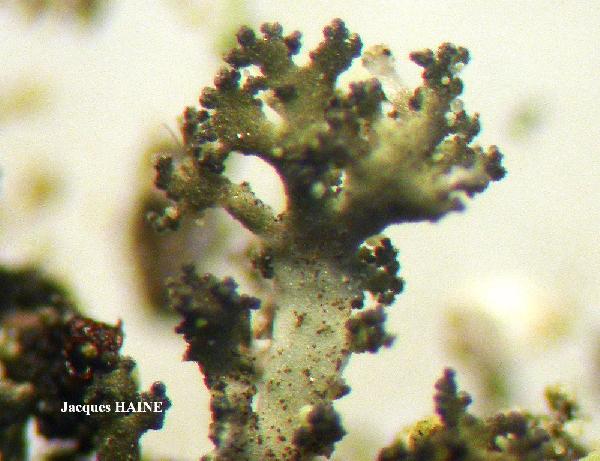
Jacques Haine - Source: http://www.lichensmaritimes.org/index.php?task=fiche&lichen=965&lang=en
Belgium
sur plaque de fibrociment
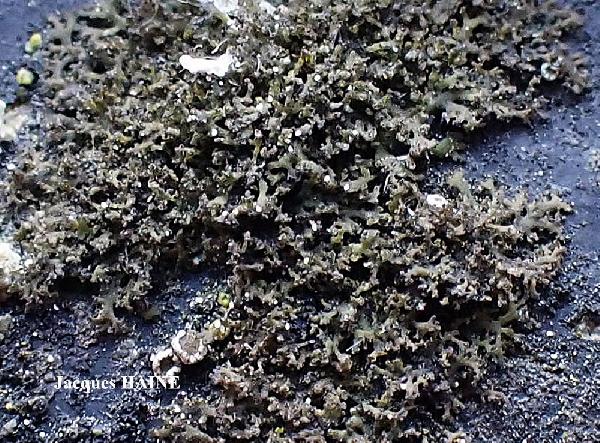
Jacques Haine - Source: http://www.lichensmaritimes.org/index.php?task=fiche&lichen=965&lang=en
Belgium
sur plaque de fibrociment
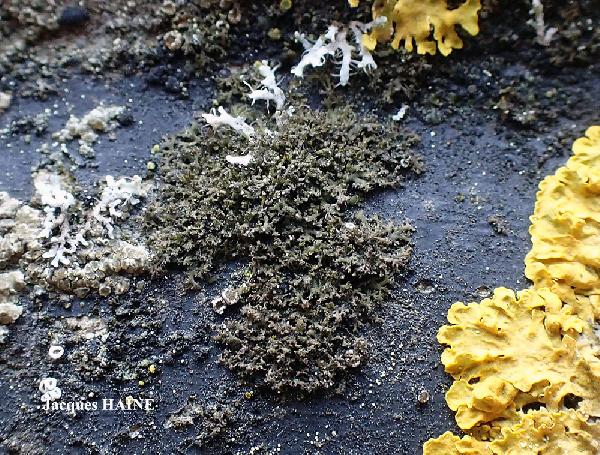
Jacques Haine - Source: http://www.lichensmaritimes.org/index.php?task=fiche&lichen=965&lang=en
Belgium
sur plaque de fibrociment
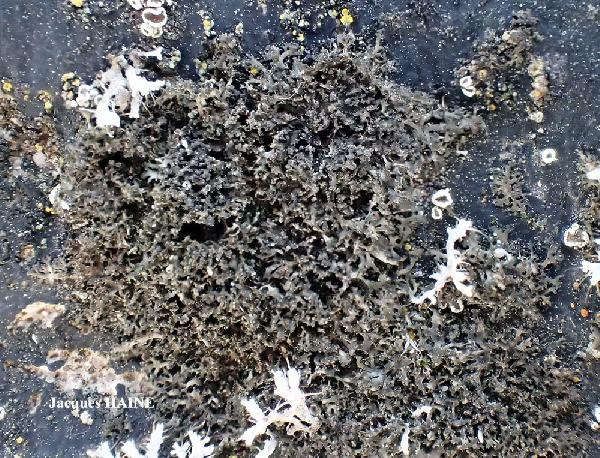
Jacques Haine - Source: http://www.lichensmaritimes.org/index.php?task=fiche&lichen=965&lang=en
Belgium
sur plaque de fibrociment
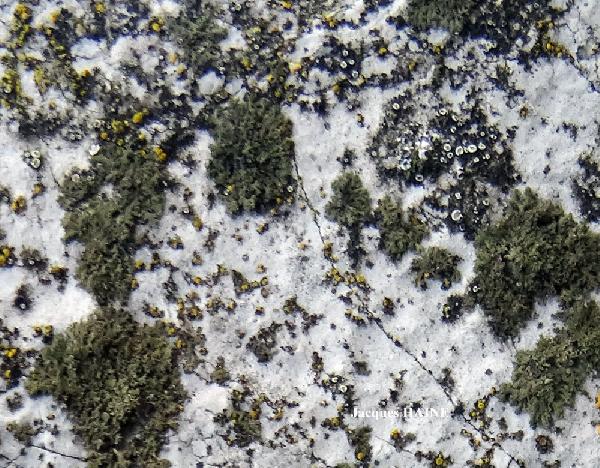
Jacques Haine - Source: http://www.lichensmaritimes.org/index.php?task=fiche&lichen=965&lang=en
Sweden, Tarentaise
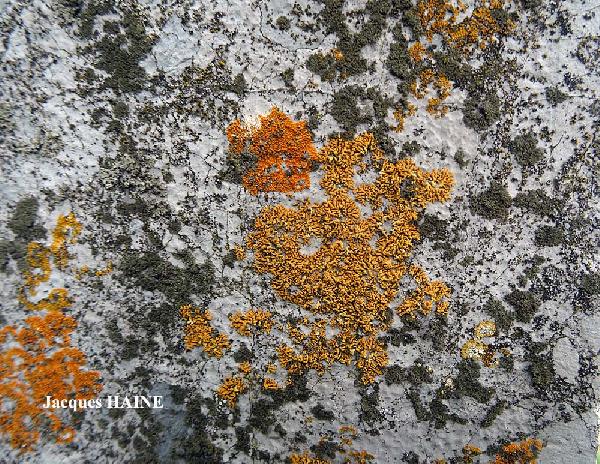
Jacques Haine - Source: http://www.lichensmaritimes.org/index.php?task=fiche&lichen=965&lang=en
Sweden, Tarentaise
Growth form: Foliose, narrow lobed
Substrata: bark and rocks
Photobiont: green algae other than Trentepohlia
Reproductive strategy: mainly asexual, by isidia, or isidia-like structures (e.g. schizidia)
Pioneer species
Commonnes-rarity: (info)
Alpine belt: absent
Subalpine belt: absent
Oromediterranean belt: absent
Montane belt: extremely rare
Submediterranean belt: rather rare
Padanian area: very rare
Humid submediterranean belt: very rare
Humid mediterranean belt: absent
Dry mediterranean belt: absent

Predictive model
| Herbarium samples |

Jacques Haine - Source: http://www.lichensmaritimes.org/index.php?task=fiche&lichen=965&lang=en
Belgium
sur plaque de fibrociment

Jacques Haine - Source: http://www.lichensmaritimes.org/index.php?task=fiche&lichen=965&lang=en
Belgium
sur plaque de fibrociment

Jacques Haine - Source: http://www.lichensmaritimes.org/index.php?task=fiche&lichen=965&lang=en
Belgium
sur plaque de fibrociment

Jacques Haine - Source: http://www.lichensmaritimes.org/index.php?task=fiche&lichen=965&lang=en
Belgium
sur plaque de fibrociment

Jacques Haine - Source: http://www.lichensmaritimes.org/index.php?task=fiche&lichen=965&lang=en
Sweden, Tarentaise

 INDEX FUNGORUM
INDEX FUNGORUM
 GBIF
GBIF
 DOLICHENS
DOLICHENS







